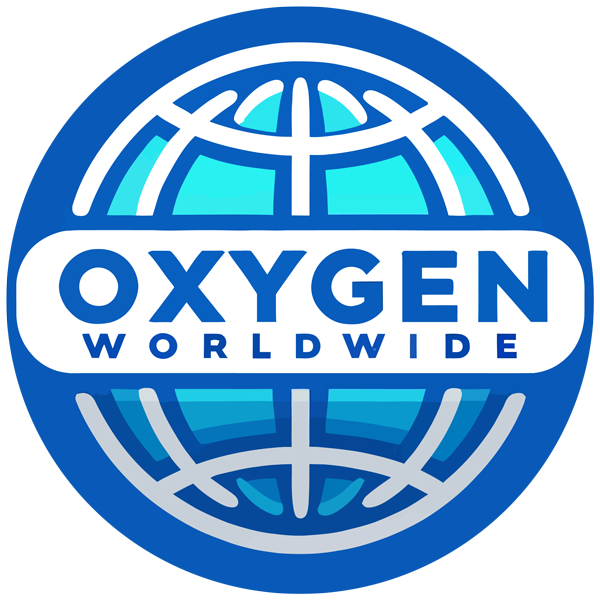Many people with COPD need supplemental oxygen therapy. Unfortunately, some people who use portable oxygen are wary of traveling with oxygen. So they opt to stay at home instead of going out to see friends, shop, or enjoy a vacation.
However, oxygen therapy can really improve your physical capacity to move around and perform tasks that your advanced COPD was preventing you from performing. You might discover that using oxygen increases your freedom to go where you want to go and do what you want to do once you understand what’s involved.
Use portable oxygen therapy instead
For excursions away from home, you’ll need to convert to a portable oxygen delivery device if you don’t already have one. Small tanks are used by portable oxygen concentrators, or POCs, to store compressed oxygen. Travel carts and carrying bags are typically included with POC tanks. These work great for travelling through airports or just for sightseeing. POCs are battery-operated. A few batteries have a five-hour lifespan. In order to be plugged in when in a car or anywhere with an electrical outlet, POCs also come with AC/DC adapters. You will be able to live a more active life with greater freedom thanks to the portable oxygen delivery system. Always have your oxygen supplier’s phone number handy. Whether you’re in town or not, you never know when you might run into issues with your portable oxygen supply.
Here are some more pointers for oxygen-powered travel:
Using portable oxygen for land travel
Consult your doctor beforehand. Find out if you can travel safely with COPD. Inform your physician of your intended travel itinerary. If you are travelling outside of the nation or to higher elevations, this is especially crucial.
There won’t be many limits on your ability to bring oxygen when travelling by automobile or motor home. If you store your portable oxygen carefully, you can bring it in your car with you. When travelling, keep your oxygen in the car but out of the heat. As gases escape from oxygen containers, partially roll down a window. These gases are dangerous and can accumulate in small areas. The portable oxygen concentrator should never be kept in a heated car or other enclosed space. With portable oxygen, travelling by train while carrying oxygen should be safe. Once more, make sure you can carry portable oxygen on board by giving the railway line a call in advance.
Don’t forget to factor in additional oxygen for the journey as well as for getting to and from your destinations.
Day trips and bringing portable oxygen to restaurants
You can visit eateries, retail centres, movie theatres, concerts, religious events and other locations even while receiving oxygen therapy. Once more, follow these safety guidelines when using portable oxygen for a successful day trip:
- Make sure you have enough oxygen in your tank before leaving your house, at least enough for the journey there and back, plus a little extra.
- Verify that your oxygen supply is operating properly.
- When you get to your destination, avoid approaching or sitting next to smokers.
- In restaurants, request that any candles be taken from your table.
Using portable oxygen while cruising
Speak with the cruise line staff before making your arrangements. Find out the ship’s regulations on carrying portable oxygen. On board the ship, extra oxygen is occasionally supplied. If not, you’ll need to pack extra oxygen in case you need it for the whole cruise. Ask ahead of time to be sure. When the ship arrives at each port of call, you might be able to acquire oxygen refills. Don’t forget to bring the right electrical adapters for your portable oxygen apparatus.
Oxygen-related air travel
Many COPD patients require supplemental oxygen to be administered during flying. You will have to establish plans in advance in order to be able to accomplish this.
To help you have a simpler vacation, consider the following guidelines:
- When making your reservation, find out from the airline what its policies are regarding carrying portable oxygen.
- Find out which portable oxygen concentrators can be used throughout the flight that have been given the go-ahead by the Federal Aviation Administration (FAA). To bring portable oxygen on a flight, you need to get your airline to authorise the kind you use.
- Ask your oxygen supplier whether you can rent a portable oxygen concentrator that has been approved by the FAA if you don’t already own the appropriate kind of container.
- Ask your oxygen supplier whether you can rent a portable oxygen concentrator that has been approved by the FAA if you don’t already own the appropriate kind of container.
- To reduce anxiety about missing a connecting flight or having a layover, try to book a nonstop or direct trip.
Re-contact the airlines forty-eight hours prior to departure. Tell them you’re using oxygen to travel. For certain airlines, approving the oxygen tank’s use on the aircraft requires an inspection 48 hours prior to takeoff. For a price, other airlines might offer oxygen for use on board. - Find out if you require additional coverage for using oxygen during your flight by getting in touch with your insurance provider.
- Consult your doctor for a prescription for extra oxygen, and carry it with you at all times. This medication ought to confirm the necessity of in-flight oxygen and provide details on the oxygen flow rate and duration.
- Make careful to complete any documents your doctor may need to fill out ahead of time, as the airlines may have their own.
- You could require an increase in the oxygen flow rate when flying, at the discretion of your physician. Make sure you discuss this with your physician so that you can breathe comfortably at high altitudes.
- It’s possible that the airlines will ask you to bring a lot of batteries to run your POC. Make sure your battery lasts for at least half as long as the entire distance you’re travelling, from the moment you leave your house until you reach your destination.To start planning your travel with medical oxygen contact our team.
1 Comment
Add comment Cancelar la respuesta
Lo siento, debes estar conectado para publicar un comentario.





Great Article!! Oxygen treatment increases the amount of oxygen that flows into your lungs and bloodstream. If your COPD is very bad and your blood oxygen levels are low, getting more oxygen can help you breathe better and live longer.